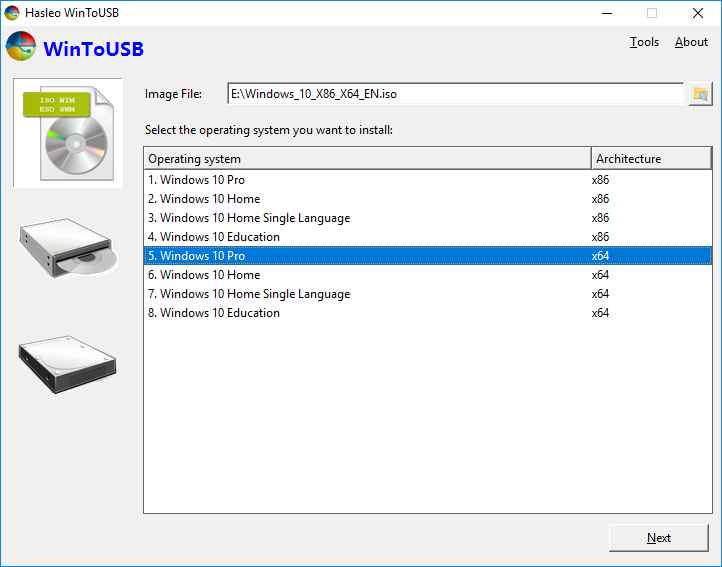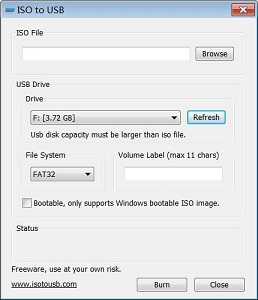
- #WINDOWS 7 ISO TO USB WINDOWS 10 HOW TO#
- #WINDOWS 7 ISO TO USB WINDOWS 10 INSTALL#
- #WINDOWS 7 ISO TO USB WINDOWS 10 UPGRADE#
- #WINDOWS 7 ISO TO USB WINDOWS 10 LICENSE#
- #WINDOWS 7 ISO TO USB WINDOWS 10 WINDOWS 8#
Sector size (logical/physical): 512B/512B You'll need to figure out which one of the devices listed is your USB drive, based on the model name, disk size, etc.Įxample with the parted -l command showing an USB drive attached to my computer:

This should output the disks and partitions attached to your computer, including the USB drive. Plug-in the USB into your computer, then run the following command (you can also use lsblk or sudo fdisk -l instead or use Gparted if you prefer a GUI) in a terminal: Find out the USB drive device name and available partitions
#WINDOWS 7 ISO TO USB WINDOWS 10 INSTALL#
Follow the steps below to do this, and then install Ventoy on an USB drive on Linux.ġ.
#WINDOWS 7 ISO TO USB WINDOWS 10 HOW TO#
#WINDOWS 7 ISO TO USB WINDOWS 10 UPGRADE#
#WINDOWS 7 ISO TO USB WINDOWS 10 WINDOWS 8#
Ventoy comes with both legacy and UEFI Secure Boot support, and it has been tested with more than 260 ISO files, including Debian, Ubuntu (and its flavors), CentOS, RHEL, Deepin, Fedora, SLES, openSUSE, MX Linux, Manjaro, Linux Mint, Elementary OS, Pop!_OS, Solus OS, Zorin OS, Arch Linux, Puppy Linux, Tails, Slax, Kali Linux, Mageia, Slackware, Gentoo, NixOS, ALT Linux, KDE Neon, and many other Linux distributions, as well as Windows 7, Windows 8 / 8.1, Windows 10, and Windows Server 2012 / 2012 RS, 20. When you want to use this same USB drive to boot an ISO, all you have to do is copy the ISO file (or multiple ISOs) to the USB and boot from it.

Delete all ISO files from it and use it as a regular USB drive (Ventoy only takes a few MB of space and is not visible when mounting the USB drive). To take advantage of the whole USB drive for other purposes, you don't have to format it. Once Ventoy is installed on an USB drive, that USB drive can be used to boot ISO files that you copy to it, but you can also copy other files to it, and that won't affect the operation of Ventoy. It's worth noting that you can continue to use the USB stick for other purposes. You can even create a multiboot USB drive by adding ISO files for some Linux distributions and Windows ISO files on the same USB, as seen in the screenshot at the top of this page.

When copying multiple ISO files to the USB drive, Ventoy provides a menu on boot from where you can choose which ISO to boot.

] With Ventoy 1.0.52, the application comes with a GUI for Linux (it already had one for Windows). It has a graphical user interface on Windows only on Linux you'll need to use it from the command line. The application is available for Microsoft Windows and Linux. You install this tool to a USB drive, then simply copy some ISO files to the USB drive and you can boot from it with no other changes (so without having to reformat the USB drive every time you want to create a bootable USB drive, and without having to extract the ISO file contents). 1.Ventoy is a fairly new open source tool to create bootable USB drives using Linux or Microsoft Windows ISO files.
#WINDOWS 7 ISO TO USB WINDOWS 10 LICENSE#
You do need a valid Windows license to activate and use most versions of Windows, but you don’t need one to create an installable USB of Windows or perform the install. If you don’t currently have one you should go there to grab one. Remember: you can download Windows 10 disc images from the Microsoft website. are supported, and the tool works with both ‘legacy’ and ‘UEFI’ bootmodes, too.įor advanced use cases I recommend using the WoeUSB CLI as it has all sorts of flags and switches to curate custom installs with specialist needs.īut for everyone else the WoeUSB GUI client is all that’s needed.īefore we begin make sure you have all of the following to handy, as all are required to create a bootable Windows 10 USB on Ubuntu: Well, WoeUSB lets you make a bootable USB for various Windows releases, including Windows Vista, Windows 7, Window 8, and Windows 10.Īll languages and all variants of Windows, including Pro, Home, N, 32-bit, and more.


 0 kommentar(er)
0 kommentar(er)
